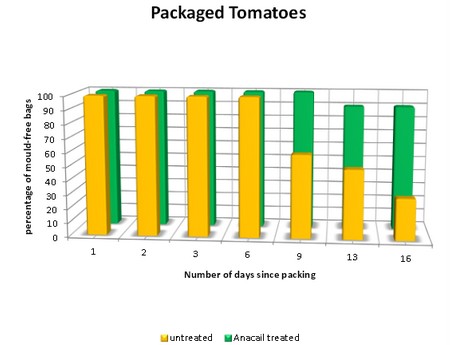
Plasma generated by a retractable device held briefly against the surface of a plastic package splits the bonds between oxygen molecules (O2) inside the packaging which then reform as ozone (or O3). The ozone interacts rapidly with the mould, fungi or bacteria on the packaging’s contents, destroying them without adversely affecting the products taste. Any residual ozone naturally returns to its original oxygen state a short time after.
The product’s effectiveness as a mould-killer has been shown in laboratory trials to improve the quality of fruit, by reducing the number of individual fruits that start going mouldy, and can extend the packaged products total shelf-life by many days. The company has demonstrated they can extend the shelf life of packaged tomatoes - based on the number of mould free packs versus a control - from 5 to 20 days. A similar improvement was obtained with trials on table grapes.
Anacail Chief Scientist Dr Hugh Potts said: “We’re very excited about the application of this technology to packaged fruit. It’s safe and easy to use, and it doesn’t require any chemical additives – the mould reducing effect comes directly from the activated oxygen via our plasma head.” He further added, “ozone has a limited lifespan before it returns to oxygen and it doesn’t leave behind any dangerous residues so it’s perfectly safe to use in food decontamination. It’s a very effective way to destroy or inhibit the growth of yeasts, moulds and bacteria.”
Dr Ian Muirhead, CEO commented: “We believe our ozone packaging solution can have a significant impact for producers, retailers and consumers by improving the quality of the fruit by stopping it decaying so quickly, and as a consequence reducing waste. The extended shelf life will also offer the opportunity for tomato and table grape exporters to expand their overseas market penetration by maintaining product quality longer than currently achieved”.





